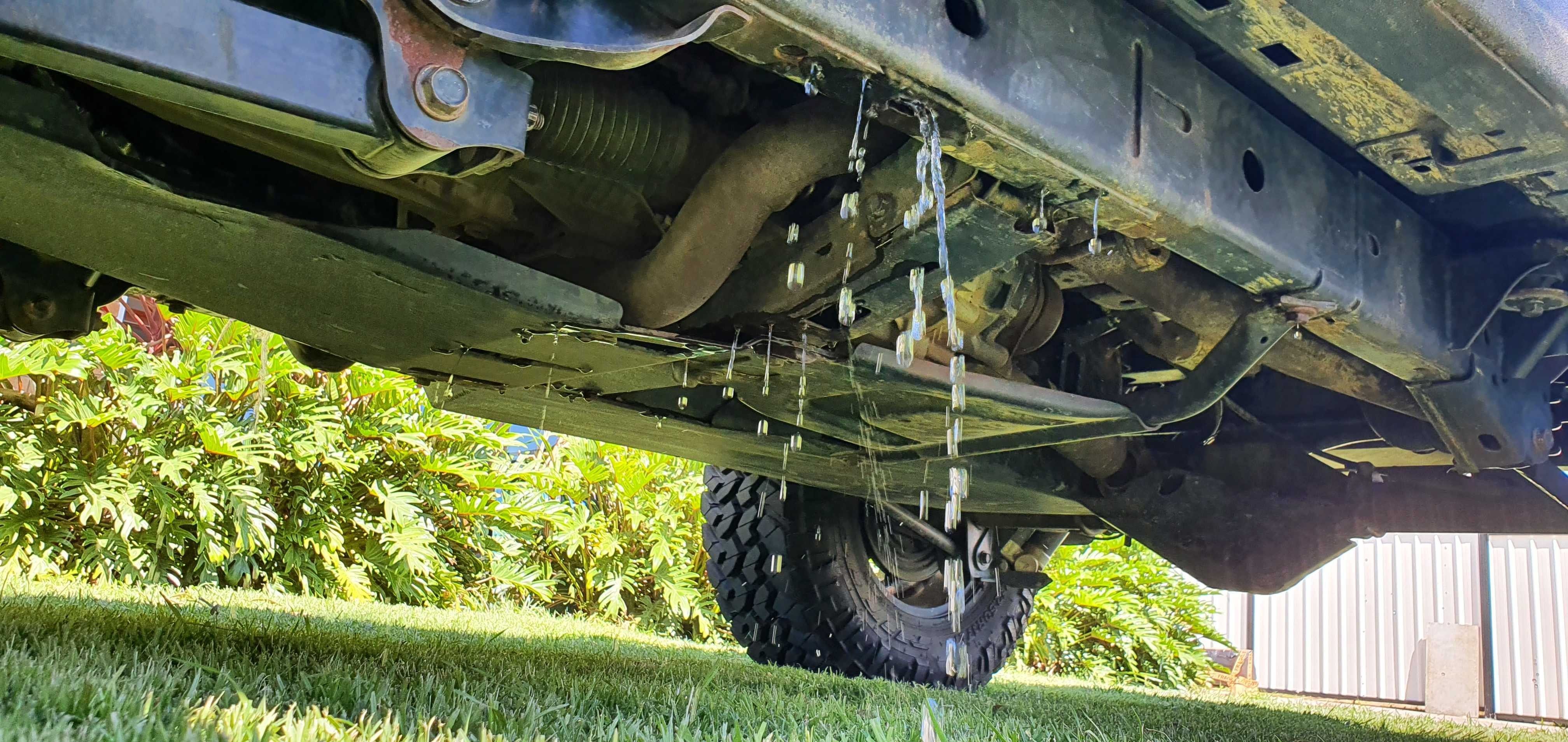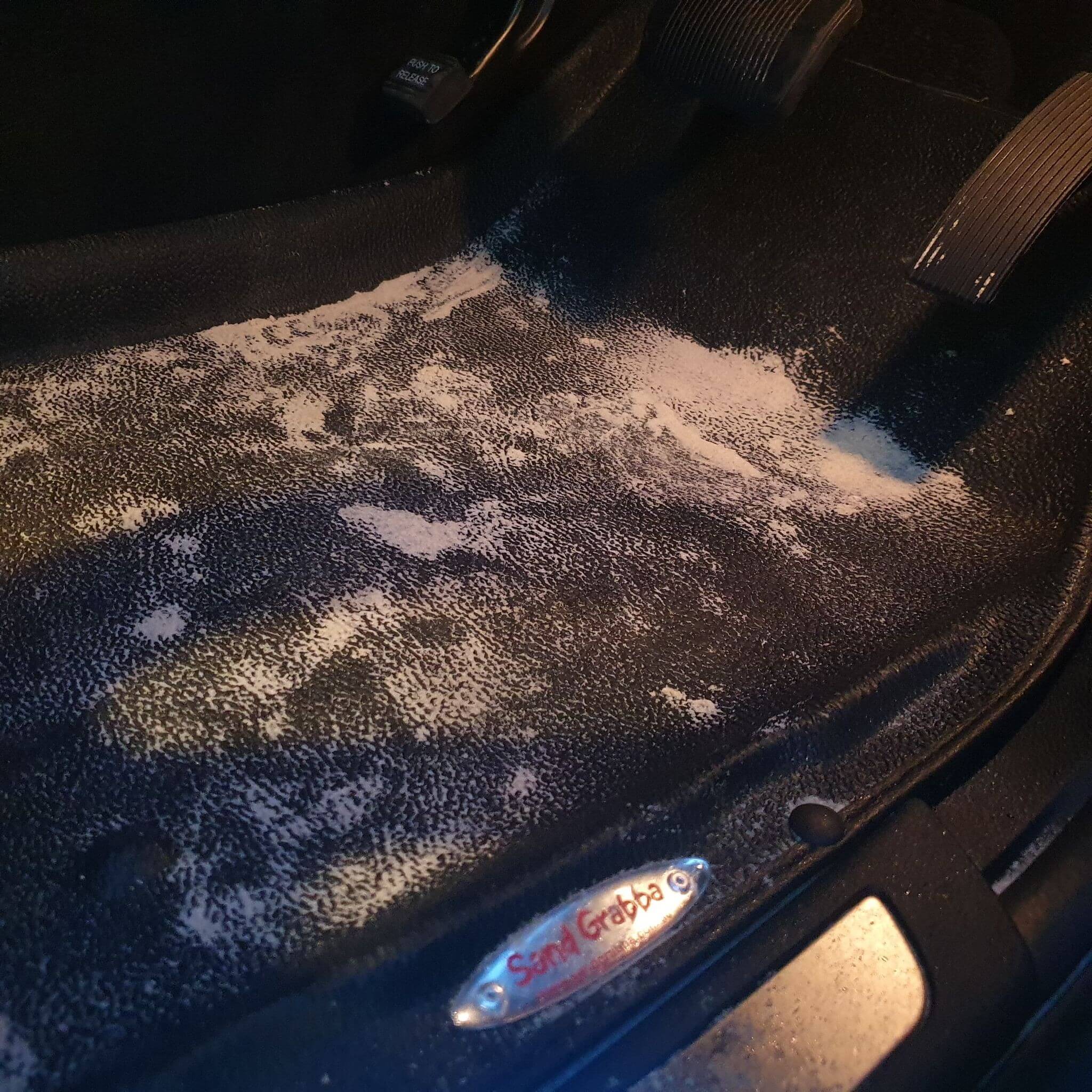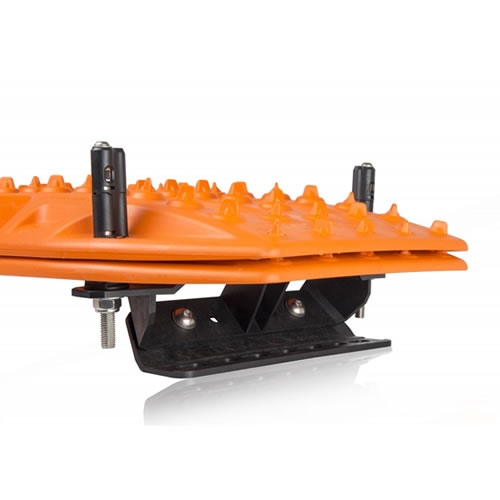
Get Your Free Oil Test Kit
Engine Oil Analysis Testing - Preventing Engine Failure - See The Early Signs In Your Used Oil Sample
The worst piece of news you get as a four wheel driver is to hear that the heart of your beast is blown. When the engine in your 4wd is so worn down the only option is to replace it, rebuild it or buy a new car, you're stricken with that sinking feeling.
Shavings of metal from engine internals, rubbish and debris from off roading and a lack of lubrication can all be causes of an engine failure. Replacing your engine isn't cheap - depending on what kind of truck you have you could be up for a few grand at least for parts and labour. Even if certain parts of an engine are worn, the likelihood of getting out of it cheaply isnt high.
Your engine oil is crucial in keeping your truck or 4wd running smoothly. The health of your engine is often identified by the quality and condition of your engine oil. Think of it like a human blood checkup at the local doctors.
It's actually very easy to have an engine oil test analysis done on your vehicle. Tough Toys offers you a kit to provide a sample of oil to a scientific lab for testing. The sample kit is completely free and you just need to fill out a quick form to have yours mailed to you. Once the results are back from your test, you will get an email from the lab at which time you can pay for it.
What is in the kit?
What exactly is in the oil analysis kit? The kit contains a small jar or bottle for the sample along with a label that tells the lab the details of your vehicle. The kit also includes a simple device allowing you to extract the sample oil from the dipstick of your vehicle. No messy hands or dirty jeans required!
Why Get an Oil Analysis?
Oil analysis can give you an insight into:
- How efficiently your fuel is being burned
- How much life remains in the motor oil
- Whether there's water, fuel or other contaminants in the oil
How to Take an Oil Sample
Taking an engine oil sample with our free engine oil analysis kit is easy. Once you receive your free kit in the mail, follow these instructions for a simple, mess free oil sample from your engine.
- Unpack the oil analysis kit and prepare to take a sample of oil from your engine. Run the engine until it is warm and the radiator fans have turned on then turn off the engine.
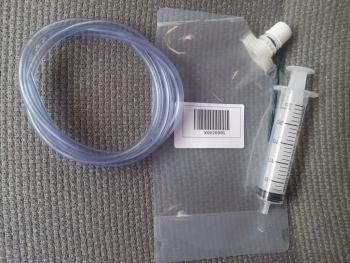
- Attach the sample bag to a bracket or hose in the enginebay using the ties supplied. As seen here attached to the vehicle air filter box.
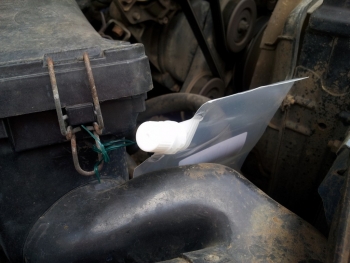
- Remove your dipstick and feed the sample hose down until it reaches the engine oil sump. Connect the syringe and suck the oil out of the engine. When the syringe is full, disconnect the syring and empty it into the sample bag.

- Once you have filled the bag with approximately 80ml of oil, insert it into the 2 supplied ziplock bags and then into the postage paid envelope. Take the postage paid envelope to the post office and mail it for analysis.
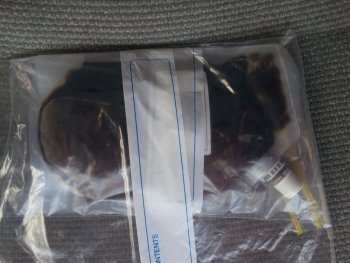
Frequently Asked Questions About Oil Analysis
What Will My Report Look Like?
Your report will include a reading for each element tested with abnormal readings highlighted, an overall rating for your engine is included (good, ok but monitor, or you have a problem that requires attention. We also summarise recommendations for any remedial action required. Refer to "example report" to get an idea of how this information is presented.
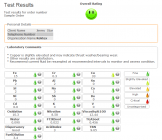
Fine
Monitor
Action
What is oil analysis and why should I do it?
The fluids circulating through your engine provide a record of what's going on inside that engine. By performing a series of scientific tests on a properly collected sample, the laboratory can read that record and provide a specific description of the problem and recommendations for corrective actions. Within 48 hours of receiving your oil sample, a report is generated which can warn you of a wide variety of problems going on inside your engine. Refer tests performed for further information.
Can I send an engine oil sample through the post?
Yes. Provided the sample is securely packaged there is no prohibition on the sending of engine oil through the Australian postal system. Used engine oil has a flash point of approximately 190 degrees celsius which is comfortably over the 60 degrees specified in the guide.
For further information you can refer to DANGEROUS & PROHIBITED GOODS & PACKAGING POST GUIDE SEPTEMBER 2009 - Amendment 2009/1D
Can Oil Analysis Predict Engine Failure?
Yes. Oil Analysis provides vital information as to the condition of both the oil and the engine being tested. It can detect wear and contamination problems that, if left unchecked, can severely effect engine performance or cause failure.
What is Soot and what causes it?
Soot is a by-product of the combustion process in a diesel engine - a carbon residue formed from fuel air and moisture in the combustion chamber after ignition. Soot particles are held in suspension by dispersant additives in the oil preventing the soot particles from agglomerating (sticking together) and attaching to the rings, pistons and liners. These suspended particles are what turn diesel engine oil black. When too much soot is generated and the additives can no longer keep it suspended, deposits will form on the rings weakening the seal between the pistons and cylinder liners. Upper end wear to rings, liners and pistons begins and if not corrected, will eventually cause severe lower end wear to the main and rod bearings, crankshaft, camshaft, cam bushing and turbo bearing.
What will my test results indicate?
Water Content by Coulometric Karl Fischer (ASTM D6304)
Contamination of an oil based lubricant by water can damage the metal-to-metal surfaces that the lubricant is designed to protect. The local frictional effects within the lubrication system be it hydraulic, engine, transmission etc, can cause temperatures in excess of the boiling point of water which would in effect cause steam cleaning of the oil away from the surfaces. The boiling of the water or moisture can also promote oxidation in the oil and be blamed for corrosion and poor lubrication on the metal surfaces. Moisture can be sourced from the atmosphere when the compartment is cooling down, engine blow by gasses and coolant leaks.
Neutralisation Number or Total Acid Number
The Neutralisation number of an oil is calculated as the amount of acid OR base necessary to make the lubricant chemically neutral. The main Neutralisation Number value used is the Total Acid Number (TAN) and this is a measure of the oils acidity expressed in the same terms as the TBN value.
Oxidation
Lubricants will oxidise when exposed to air or products of combustion in engine oils. The oxidation level can be determined using infra-red signatures of the lubricant and any increase in oxidation from the "new oil" value is a measure of how the oil is standing up to the harsh environment in which it must operate. The smaller the number quoted in the report, the lower the amount of oxidation. Conversely a high oxidation level will indicate the likelihood of the oil thickening and eventual failure of the lubricated component due to a lack of effective lubrication. In applications where the lubricant has only minimal exposure to air such as sealed gear compartments and hydraulic systems, the oxidation level would not be expected to increase to the same extent as occurs in engine lubrication. As such, the lubricant life is generally longer in these compartments than in engines. Oxidation preventing additives, called oxidation inhibitors or anti-oxidants, are generally incorporated into most formulations to counteract the effect that oxygen and heat, the major cause of the oxidation, have on the lubricant.
Nitration
A major component of air is the gas Nitrogen. In extreme cases, it can react with the lubricant and oxygen to produce an effect called Nitration. In compartments such as gear boxes or hydraulic systems, the nitration effect would be minimal since the exposure to air and high heat (>300 deg C) is rarely encountered. However, in the combustion process in engines, the temperatures exceed 600 degrees C. Oxygen, Nitrogen, fuel and lubricating oil combine to form nitration products including nitrogen oxides which by and large are exhausted to atmosphere. Some can however, find its way past the rings and into the crankcase. Once in the crankcase the nitration product will combine with soot, oxidation and sulphation products. The nature of the soot (carbon formed by incomplete combustion of the fuel) is such that nitrogen oxides and nitration products are absorbed and retained in the sump oil. Again, as in the case of oxidation, the infra-red signature of the lubricant shows the extent of presence of nitration. As would be expected, the value for a new oil is low and would reflect the relatively small amount of nitrogen based products formulated into the lubricant as anti-oxidants. As the soot content of the used oil increases, so does the nitration level.
Wear Elements
Iron can be present as fine particles produced by abrasion or wear, but also as iron oxides associated with the presence of water or a corrosive reaction to additives. Iron generally comes from the liners in engines or from hydraulic cylinders, pumps, lines and reservoirs in hydraulic systems and from planetary gears and carriers in final drives and differentials.
Chromium is a very hard metal wear particle produced by engine piston rings. Chromium readings indicate that something harder than it is present, namely silica or alumina (sand). It can also be produced in new engines during the run-in period. Chromium in hydraulic systems is typically from valve spools or cylinder rods. It is also produced by harder abrasives. Chromium is also found in final drive and differential bearings.
Copper is a soft metal from bronze alloys that are present in engines, hydraulic pumps, differentials, final drives and in cooler cores. In engines, its presence could be caused by a coolant core or water pump leak, but also from thrust washers in the camshaft, rocker arm or piston wrist bushings. When present with Glycol (in association with potassium and sodium) it could be coming from oil cooler. When it is associated with lead and/or tin, but without glycol traces, it is an indication that it is coming from the bearings/bushings. New oils can promote high copper generation during run-in periods, ranging from 10 to 100 parts per million or more. Larger generation of copper is typically triggered by water, silica (dirt), high temperature operation and most importantly, by additive incompatibility from fluid mixing. Copper is also found in final drives equipped with park brakes and slip spin/diff lock differentials, or from thrust washers.
Aluminium is a wear element that generally comes from pistons in engines. High aluminum associated with silica is probably dirt. If aluminum is found in hydraulic systems, it could generally be assumed it comes from dirt ingestion. Aluminum in final drives can only be dirt or sand. Some bearings can include aluminium (eg refrigeration compressor bearings and some main engine bearings).
Tin is a metal used in soft alloys of bronze in combination with lead. It is generally present in small amounts in hydraulic pumps. However, when tin is present in engines, it is usually associated with lead and copper to indicate bearing wear.
Lead is a very soft metal used in alloys in combination with tin for engine bearings and bushings. Lead is present in hydraulic pump alloys as well. Highly oxidized engine oils attack bearing material, which increases lead readings.
Nickel it is seldom seen in oil analysis but when it shows up it is an indication of turbocharger cam plate wear.
Titanium is not a typical wear metal present in oil analysis from construction equipment. Some traces are possible from some alloys. Titanium in the form of titanium oxides can be found in oil analyses as a contaminant from operation in bauxite mines.
Contamination Elements
Silicon is the principal component of dirt and it is found in its natural and oxidative form as silica. It is harder than any metal used in mobile equipment and can scratch hard surfaces easily. In new engines, its presence could indicate liquid silicon material used as sealant during assembly. It typically washes out after first oil change. Silica (the oxidative form of silicone) appears in nature associated with alumina in a typical 5 to 1 ratio. Silicon up to approximately 10-15 ppm may reflect presence of silicone oil based anti-foam additive.
Potassium may be present in coolant formulations and it is not an additive for engine oils as such, although some small readings of about 2 to 3 PPM could sometimes be indicated. When combined with sodium and sometimes with boron, it is a confirmation of coolant contamination.
Boron is an EP (extreme pressure) additive but it is also found in coolants. Boron without the presence of potassium is an indication of an additive.
Barium as barium petroleum sulfonate can be used as a detergent in oil formulation as well as corrosion inhibitors.
Calcium as calcium petroleum sulfonate is a detergent. It cleans carbon deposits from engines and acts as a corrosion inhibitor and dispersant. When burnt, calcium additives have an ash content of generally >1% in engine oil formulations.
Magnesium as magnesium petroleum sulphonate is also a detergent that leaves generally < 1% ash. It reacts with sludge and varnish to neutralize them and keep them soluble.
Molybdenum may be present in some oil formulations as a solid lubricant additive (molybdenum disulfide) and may be used as an additive in grease. Soluble molybdenum additives are added to formulations in some cases.
Phosphorus is found in extreme pressure (EP) as well as in anti-wear /anti-oxidant additives and friction modifiers in engine oils, hydraulic fluids and gear oils.
Sulphur is found in extreme pressure additives in combination with phosphorus.
Zinc is part of ZDDP (Zinc Dialkyl DithioPhosphate) additive that acts as an anti-wear, anti-corrosive and anti-oxidant.additive.
Total Base Number for Engine Oils
Corrosion inhibitors are added to counter acidic effects on metals. In engine oils, reserve alkalinity is included in the formulation to neutralise acids formed by combustion. This is reflected by the Total Base Number (TBN) of an engine oil.
The TBN value of an oil is calculated from the amount of acid that is required to counteract its basic characteristics. The TBN is expressed as the Equivalent mass in milligrams (mg) of potassium hydroxide (KOH) per gram of the oil.
Pentane Insolubles or Soot Content.
The laboratory can also monitor the amount of detrimental soot contained in an engine oil by filtration of the material insoluble in a solvent called Pentane. This filtration is at 0.8 micron in size, on the basis that material less than 0.8 micron would not be likely to cause problems. The material removed is weighed and expressed as a percentage of the oil. Values below 0.35 % by weight are usually considered acceptable in the normal service interval for a diesel engine.
Levels of about 0.35 % by weight indicate a slight detrimental effect on the oil and gives evidence of "sooting" usually caused by poor ring seal. The root causes of these problems could be excessive periods of idle running, cold running, or fuel washing the oil seal away in cases of defective injectors.
If levels above 0.35 % by weight are experienced a definite problem has occurred and renders the oil unsuitable for further use and should be changed.
Fuel Dilution by Gas Chromatography
Fuel dilution in an engine oil can be caused by several factors. Determining the extent of the contamination by fuel by accurate means is essential for the effective monitoring of engine performance. Gas Chromatography can precisely determine the fuel dilution in a lubricant to as low as 0.2% v/v by separating and quantifying the actual fuel content. Other methods employed in the past included approximation from flash point values to an accuracy of + or - 4%. In instances where the 2 stroke engine of the Detroit type are used, the 4% margin can be the difference between engine failure or not. This is due to excessive fuel in the oil which can have the effect of thinning it out to an unacceptable level.
Although indication of fuel dilution can be determined from viscosity values in some instances, "sooting", another product of incomplete combustion of the fuel, can have a thickening effect of the oil and thereby disguise fuel dilution problems.
How do I get my results?
For speed of reporting and quality of reading we prefer to email results rather than fax or post. You can specify how you want to receive your results when sending us the sample.
Can I ask for technical advice in interpreting the results received?
If there are any results you do not understand, our engineers would be happy to explain these to you. Please contact us via our enquiry form.
How will I know if my engine has a problem, and what action should I take?
A detailed analysis report is sent to you every time you send us a sample. Recommendations and analysis are included in our report. If you require more information you can complete our enquiry form and we will be happy to help.
How do I take an oil sample?
A sample kit along with detailed instructions will be despatched to you once you have completed sign up. You will be provided with a sample bottle, length of fuel tube with stop valve attached, and a high volume syringe. You should carefully dispose of all equipment after you have taken your sample, enclose your sample bottle within the ziploc bag provided and mail it to the address provided.
How long does it take to get the results to me?
All samples, once received at the laboratory, are analysed and results usually reported within 48 hours. We will notify you by email as soon as your report is ready.




